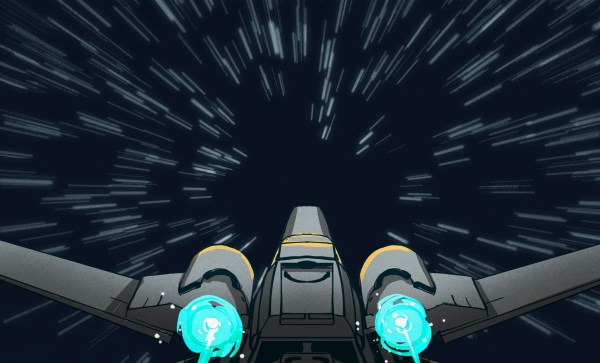The idea of traveling faster than the speed of light (FTL) has been a popular idea long before [Alcubierre] came up with the first plausible theoretical underpinnings for such a technology. Yet even if such an FTL drive is possible, it may be hundreds of years before humanity manages to develop its first prototype. This does however not prevent us from for looking for possible FTL drive signatures in the spacetime around us. Such a concept was recently proposed by [Katy Clough] and colleagues in a recent article (Arxiv preprint).
For a friendly but detailed explanation the PBS Space Time video (embedded below) on the paper comes highly recommended. The gotcha with detecting an FTL warp drive is that it is undetectable until it collapses in some fashion. By simulating what this collapse might look like, the researchers were able to speculate about the properties to look for. These include gravitational waves, which would not be detectable by an existing gravitational wave detector like LIGO, but we might be able to build one that can.
Ultimately we’d be acting on conjecture on what a warp bubble would look like and how it would behave when it collapses so we might just as well mistake something far less intelligent for Vulcans passing through our solar system. It might also be our first sign of extraterrestrial life, possibly ogling some primitive civilization on a Class M planet until it’s ready for First Contact.
Continue reading “Detecting Faster Than Light Travel By Extraterrestrials”











